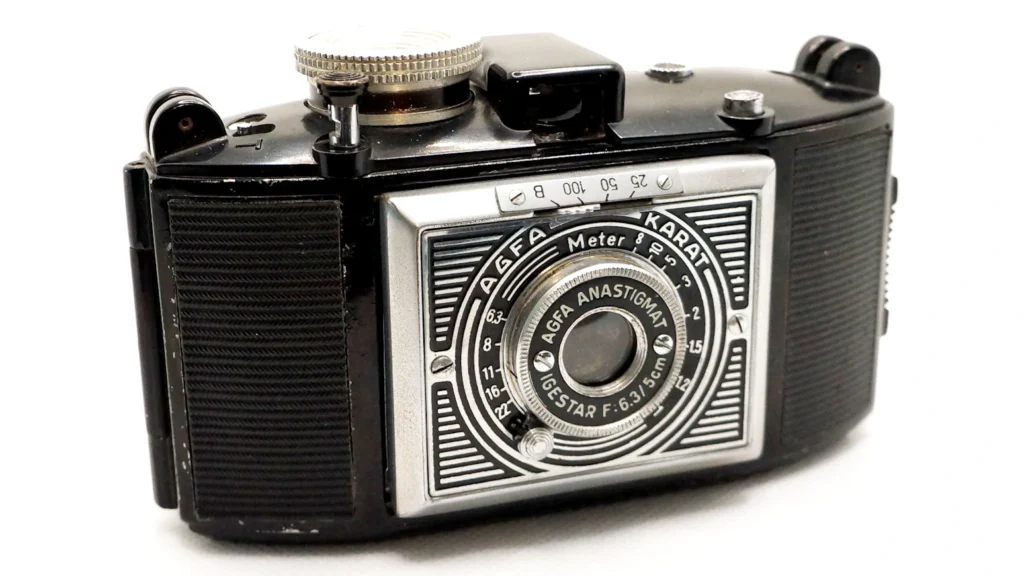
In the mid-1930s, Agfa joined the market for the “miniature format” photography, which at that time meant 35mm.
The first Agfa Karat, now known as the “art deco” model, was released in 1936. There were several other Agfa Karats that were released in 1936, and I don’t know if they were released concurrently or over the course of the year.
| QUICK INFO | |
| Body, film | Folding 35mm Viewfinder camera |
| Shutter | Leaf shutter |
| Meter | None |
| Years made | 1936-mid-1950s |
| Photo quality | Varies, depending on the lens |
| Ergonomics | Small but slippery |
All of the 1930s Karats share the same general elongated elliptical body shape. The lens panel pops out on its scissor struts. The film advance was next to the viewfinder, and the shutter release next to the film advance. On the other side of the viewfinder is the frame counter and a small button that releases the lens panel.
When released, the lens panel springs forward quickly, so keep a firm grip on the Karat. There is a small tab on the front of the camera below the release button that allows the lens panel to be collapsed.
The early Karats used special Agfa cassettes that aren’t too difficult to find today. They’re not common, but they’re also not rare — somewhere in between, I suppose. There were later Karat models that used the standard 35mm cassette.
You need two of the cassettes in order to take photos. An empty cassette is placed on one side, while the cassette with film is placed on the other side. Advancing the film pushes the film into the empty cassette. No need to rewind. Once you’ve taken all of your photos, the now-empty cassette can be transferred to the takeup side. Because of how the mechanism works, the film leader is left outside the cassette. In fact, you don’t want to push the film leader inside the cassette, because there’s no way to nondestructively open most of these.
These days, you need to preload the cassette, which is best done with a bulk loader but also can be accomplished with any 35mm camera. But keep in mind that you only get 12 shots per roll, and a lot of this probably has to do with the fact that the camera has to push a length of film into an empty cassette.
With a three-speed shutter (four, if you count “B” and five, if you count the lever that turns it into “T”) and a maximum aperture of f/6.3, this isn’t going to be the camera for low-light photography or even shooting on a cloudy day unless you’re using a high-speed film.
These are very small cameras that can easily slip into a coat pocket. Just remember that you’ll need to guess on the focus and exposure.
The camera is sturdily made, and it does what you ask of it. There aren’t any surprises when you shoot with the little Agfa Karat, and perhaps that’s all you can ask of a camera.